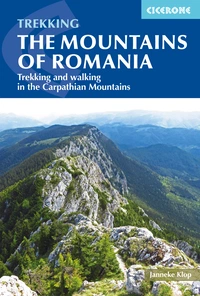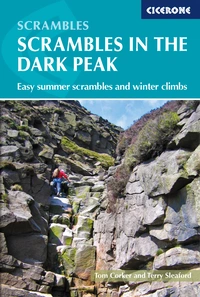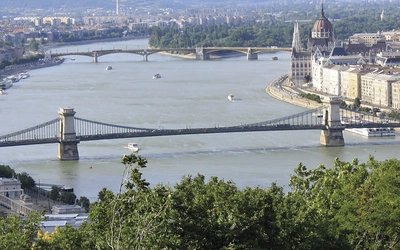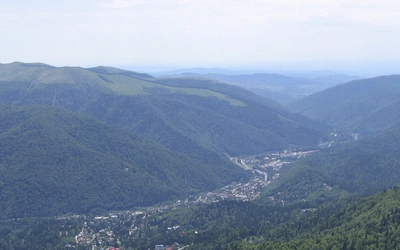The Mountains of Romania: hiking in the rugged Carpathians
‘What do you know about Romania?’ Ask someone this question and chances are their eyes will glaze over instantly. Janneke Klop didn’t know the first thing about this mysterious Eastern European country either, until a friend invited her to a summer camp in Transylvania back in 2005. It was love at first sight and now she is a self-confessed ‘roamaniac’.
From the summer of 2016 until the autumn of 2018, Janneke conquered as many Romanian mountain ranges as she could (there are many). This has resulted in a sturdy guidebook, The Mountains of Romania, with 37 routes, varying from day walks in the Piatra Mare Massif near the medieval city of Braşov to a five-day traverse of Romania’s longest ridge, the Făgăraş Mountains. Here is a short introduction to her favourite Romanian ranges, interspersed with anecdotes that reveal the soul of Romania and give you some idea of why it is such an alluring place.
Mesmerizing Maramureş
In late June 2016 I arrived in the unbelievably beautiful village of Breb in the northwestern province of Maramureş. This was where I wanted to start my Roamaniac adventure, as I had started calling it: an equally unbelievable mission to roam through all the mountains of Romania in order to put together a new Romania guide for Cicerone. I’d picked Maramureş, and specifically Breb, because I had fond memories of the place. During the two preceding summers, I’d been a volunteer at Babou Maramureş campsite and found it incredibly hard to pull myself away. It still tops my list of favourite places in Romania. Why? No one can put it better than one of Romania’s most treasured poets, Lucian Blaga, in ‘The Village Soul’ (1924):
I believe eternity was born in the village.
Here every thought is much slower,
and the heart beats at another pace,
as if it doesn’t beat in your chest,
but somewhere deep in the ground.
I have never been very good at living the fast-paced Western European life that I was taught to live. Maramureş calmed me down and made me feel more alive than ever.
Remote Maramureş is a very traditional area, where haystacks dot the meadows and villagers still live largely self-sufficiently: one cow, half a dozen chickens, a pig for Christmas and lots of preserves in the cellars of their wooden houses, as well as homemade brandy. One of the first mountain ranges I explored for my guidebook was the Rodna Mountains – a 57km-long mountain range with Pietrosul Peak (2303m) as its highest summit. It allows for wonderful lonesome hiking: few people hike the entire length of the ridge and hence you will encounter only a handful of other human beings. If you do meet someone, chances are it is a shepherd: this is a very pastoral mountain range and many flocks of sheep graze here, as well as herds of cows and semi-wild horses. There are bears as well – but they will probably stay out of sight. Keep an eye out for paw prints, though. Romania is home to Europe’s largest brown bear population – counts range from 2000 to 6000 individuals.
Other wild animals that find shelter in Romania’s mountains and forests are wolves and lynxes – but these are even more elusive than bears. You are much more likely to encounter curious chamois or whistling marmots. The Rodna Mountains can be traversed in four days; every stage ends at a lake. Since there are no huts in the Rodna Mountains (except for one at either end) you will need to bring a tent and experience the wildness of northern Romania. If you prefer a shorter hike into the Rodna, you can hike up to Pietrosul Peak from the town of Borşa and hike back on the same day, or continue along the ridge. The Rodna Mountains and the rest of Maramureş can be most easily accessed from the vibrant city of Cluj-Napoca.
The mountains around Braşov
From Maramureş, I travelled on to Braşov – the place where I first fell in love with Romania. And for good reason: this medieval Saxon town is the perfect base for mountain lovers. Many of Romania’s highest mountain ranges are within an hour’s travel away from it. The Bucegi Mountains are probably Romania’s most popular massif – and not only because it is gorgeous and versatile: it is very accessible. The train from Bucharest to Braşov stops right at the foot of the imposing Caraiman Peak in the town of Buşteni; from there you can hike up to the plateau with its famous natural rock sculptures in four hours. There are cable cars going up from Buşteni and Sinaia, so you can even make a day trip out of it. However, the Bucegi has much to offer and you might well want to spend four or five days there. The Bucegi has an excellent network of mountain huts (cabanas) so you can pack light – although you can also camp next to the huts. Like the entirety of the Romanian Carpathians, the Bucegi is a horseshoe shape. Its western flank is much less visited than the popular plateau above the Prahova Valley and makes for fine lonesome walking. From there, you can continue to the massif’s highest point, Omu Peak (2505m) and then descend through the Gaura Valley to the village of Bran. If that name rings a bell then that is probably because that is where Dracula’s Castle is. Actually, it isn’t Dracula’s Castle – the infamous Vlad the Impaler spent just a couple of months there, imprisoned. At a later stage, it belonged to Queen Marie of Romania (also known as Marie of Edinburgh).
From Bran, you can cross over to the majestic Piatra Craiului: a 27km saw-like limestone ridge that is paradise for everyone who loves scrambling. Book a bed at Cabana Curmatura, the central hut situated at an altitude of 1470m, or again pitch your tent next to it, and pick one of the many exciting excursions over the main ridge that can be made from there: conquer the near-vertical Turnu Peak (1923m) with the help of cables or head straight to the ridge’s highest peak, La Om (2238m). Whatever you choose to do, expect an exhilarating hike, and be prepared to spend much of your time on all fours. If you want to warm up first, try the Piatra Mica, the Piatra Craiului’s smaller but no less gorgeous sister: from Cabana Curmatura you can make a circuit in about two hours. Smaller doesn’t necessarily mean easier: again, expect lots of scrambling, chimneys, cables and walking on a narrow ridge. Of course, all this means you should focus on your feet, but don’t forget to look back towards the Piatra Craiului’s main ridge every now and again.
The Făgăraş
If you are in the Piatra Craiului and you look west, you will see the eastern end of Romania’s highest and longest ridge: the Făgăraş. It is 90km long and is home to Romania’s highest peaks, Moldoveanu (2544m) and Negoiu (2535m). A full traverse can be made in five days – if you stay on top of the ridge and bring your tent, that is. The ridge is dotted with dome-shaped (emergency) shelters, but the cabanas are all much lower down – to reach these you would have to descend down the northern spurs to around 1500m and hike back up again in the morning, which of course would make your hike considerably longer. However, if you feel you don’t strictly need to do a full traverse but just want to take in the ‘best bits’, you can create a shorter circuit by hiking up one of those northern spurs – the train that runs between the cities of Sibiu and Braşov will drop you off quite close to the mountains (but expect an approach walk of around 20km – in most cases you can hitchhike part of the way). If you want to ‘just’ climb Moldoveanu Peak, for instance, hike up Sâmbata Valley, spend the night at Cabana Valea Sâmbatei and conquer the peak the next day and continue west or east along the ridge for as long or short as you like. The guidebook describes the full traverse from east to west as well as an approach from the Iezer-Papuşa, a crescent-shaped massif to the south of it, and describes entry and exit routes from the north. The Făgăraş is incredibly versatile: its eastern half is characterized by gentle, rust-coloured grassy slopes, but the further west you head the harder (and more exciting) the going gets. The most challenging section is Custura Saratii, a one-kilometre (but seemingly endless) serrated section west of Negoiu Peak that requires a steady nerve and a good grip. You’ll probably be glad when it’s over but elated at the same time – and may want to do it again because it really is thrilling to be able to cover such a challenging section without climbing gear.
The Retezat and the Romans
Let’s head further west, because I haven’t even gotten to my favourite mountains yet: the Retezat. This robust and compact massif lies in between Saxon Sibiu and Austro-Hungarian Timişoara, and is home to no less than 80 lakes, which gleam seemingly guilelessly in the valleys, beckoning you – but you will have to get some work done in order to reach them. At the heart of the Retezat lies Bucura Lake, Romania’s highest and largest glacial lake. Its name means joy and that is probably what you will feel when you finally see it down below after having steeply ascended to Curmătura Bucurei Saddle. It is an absolutely gorgeous spot, from where you can make a good many excursions, varying in difficulty. You can do a short round taking in the massif’s highest peak, Peleaga Peak (2509m), or do something a little more challenging and head to Galeș Lake via Porțile Închise (‘closed doors’) – a serrated ridge that you will enjoy very much if you are the clambering type, like me. From some viewpoints, you may see as many as five lakes at once. There is no hut at Bucura Lake, so you will need to bring your tent – although it is possible to stay at one of the less centrally located cabanas and do hikes from there. The Retezat is also very close to Sarmizegetusa Ulpia Traiana, the former capital of the Roman province of Dacia, and Sarmizegetusa Regia, the former capital of the Dacians themselves. The Romans battered the Dacians’ capital and after the Romans left the Romanians battered the Roman capital, but the ruins of both are nothing less than impressive and invocative of a colourful past.
Colourful countryside
Not that Romania’s present is any less colourful – Romanians treasure their traditions. Religious holidays are celebrated zealously in the countryside (and most of Romania is countryside); villagers wear elaborate and costly traditional costumes to weddings and on Sundays. Folklore is very much alive: you will find that horses have red tassels dangling next to their ears to protect them against the Evil Eye, and according to legend a giant chopped off the top of Retezat Peak, which gave it its name: Retezat means ‘cut off’. Romanians make up the bulk of the population, but you will also hear Hungarian, German and Romani in the streets. Don’t worry: plenty of people speak English in bigger cities, although you may want to learn a word or two in Romanian if you want to ask for directions in the countryside or the mountains.
Whichever language they speak, Romanians will go out of their way to understand you. They are among the most hospitable people in the world: don’t be surprised if you get offered a stiff drink called ţuică (looks like water but isn’t – you have been warned), a chunk of homemade cheese, a full meal, or even a bed. And a hug. And a tall tale or two. More than once I just asked for a ride and got offered the full Romanian treatment: drinks, a meal with the family, a bed and a ride to the start of my route the next day. In fact, I have yet to find a Romanian household that does not have a sofa bed for visitors.
Heartfelt hospitality
One occasion I will never forget is the warm welcome I got at Cabana Croitor, nestled at a pass in between the Rodna and Suhard Mountains in northeastern Romania. I had just descended from the highest peak in the Suhard when I chanced upon two men and a woman, busy picking blueberries and gathering herbs. Since the waymarks were sparse and there were various near-parallel paths I decided to check whether I was on the right track. They showed me which of the three paths to take and I went on my way again. After a few kilometres though, they passed me in their four-wheel drive and asked if I wanted a ride: one of the men turned out to be the owner of Cabana Croitor. I happily accepted: it was getting late and I had at least another 8km over a cart track ahead of me. At the cabana, I was treated as a guest, not a customer: I didn’t have to pay. Liviu made a fire so I could have a much-needed hot shower. His friend Teo made scrambled eggs. Soon, the table was filled with Romanian delicacies and herbal tea. Liviu explained the medicinal properties of all the herbs they’d picked; I taught him some English. As the evening progressed and the crescent moon rose over the peaks of the Rodna, we started talking about the Romanian soul, and this led to poetry. All of a sudden I found myself sitting in between two men who, together, recited George Coşbuc’s ‘Noi vrem pământ’ – ‘We want land’:
I'm hungry, naked, homeless, through,
Because of loads I had to carry;
You've spat on me, and hit me - marry,
A dog I've been to you!
Vile lord, whom winds brought to this land,
If hell itself gives you free hand
To tread us down and make us bleed,
We will endure both load and need,
The plough and harness yet take heed,
We ask for land!
This, of course, happened in Romanian, and although my Romanian wasn’t good enough to understand every word, I could hear and see how earnestly they recited those lines: this was at the core of who they were. Yes, many ‘vile lords’ have trodden on Romania’s territories; many a time these men’s ancestors had to submit to a foreign yoke. But now that they have got their land they treasure it – and they treasure anyone who happens to traverse it. They know what hardship is, and therefore they will make sure you get treated well. Romania is as warm-hearted as it is rugged: you may well find yourself wishing to extend your stay after your third ţuică. Because Romania makes you lose track of time and slow your pace. And if you do need to leave, it will embrace you and make you feel you must come back, sometime soon.
The Mountains of Romania
Trekking and walking in the Carpathian Mountains
£18.95
Guidebook to walks and multi-day treks in the Carpathian mountains of Romania. Includes routes in the Maramures and Bucovina regions, Piatra Craiului ridge, and the Retezat and Fagaras mountains.
More information











